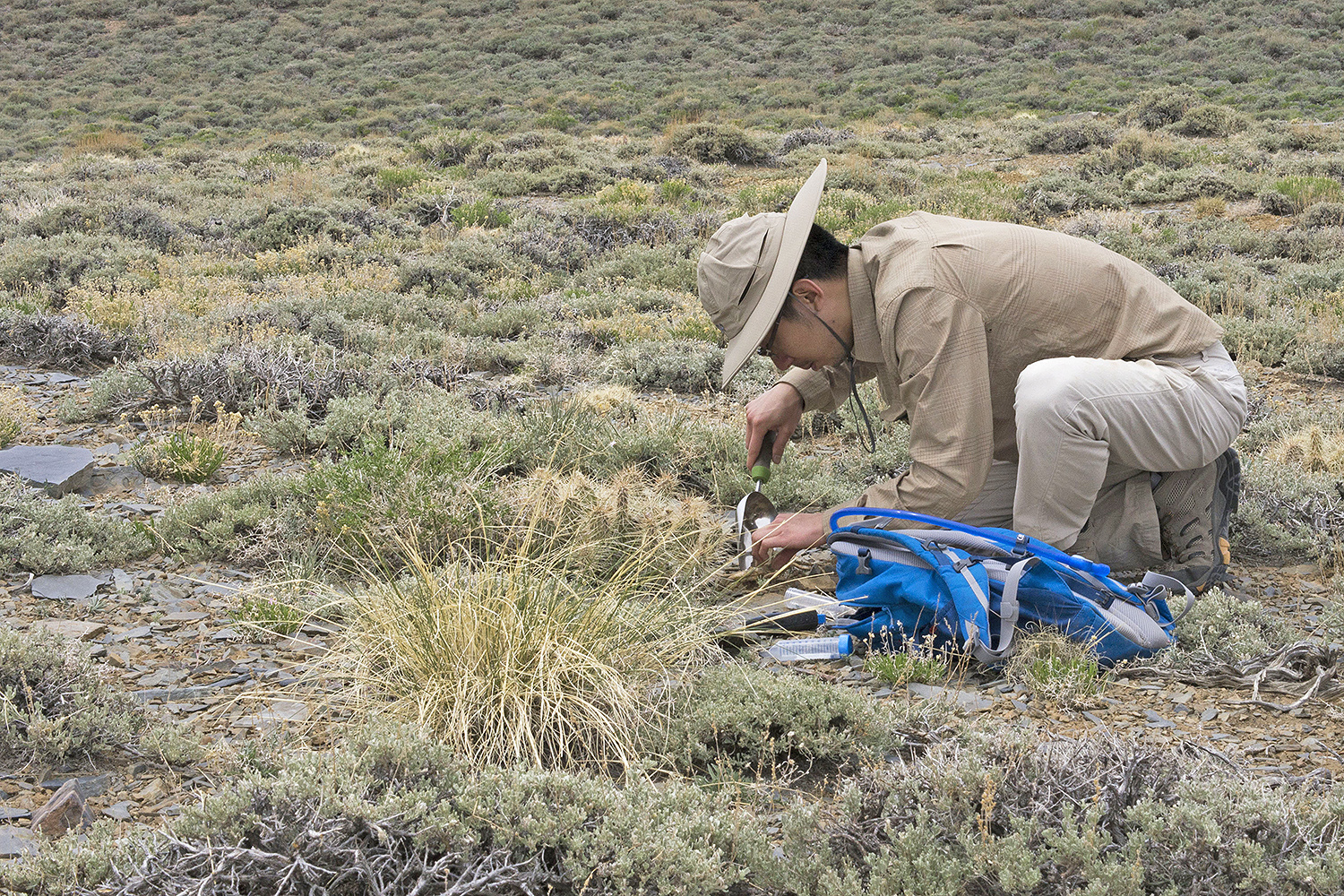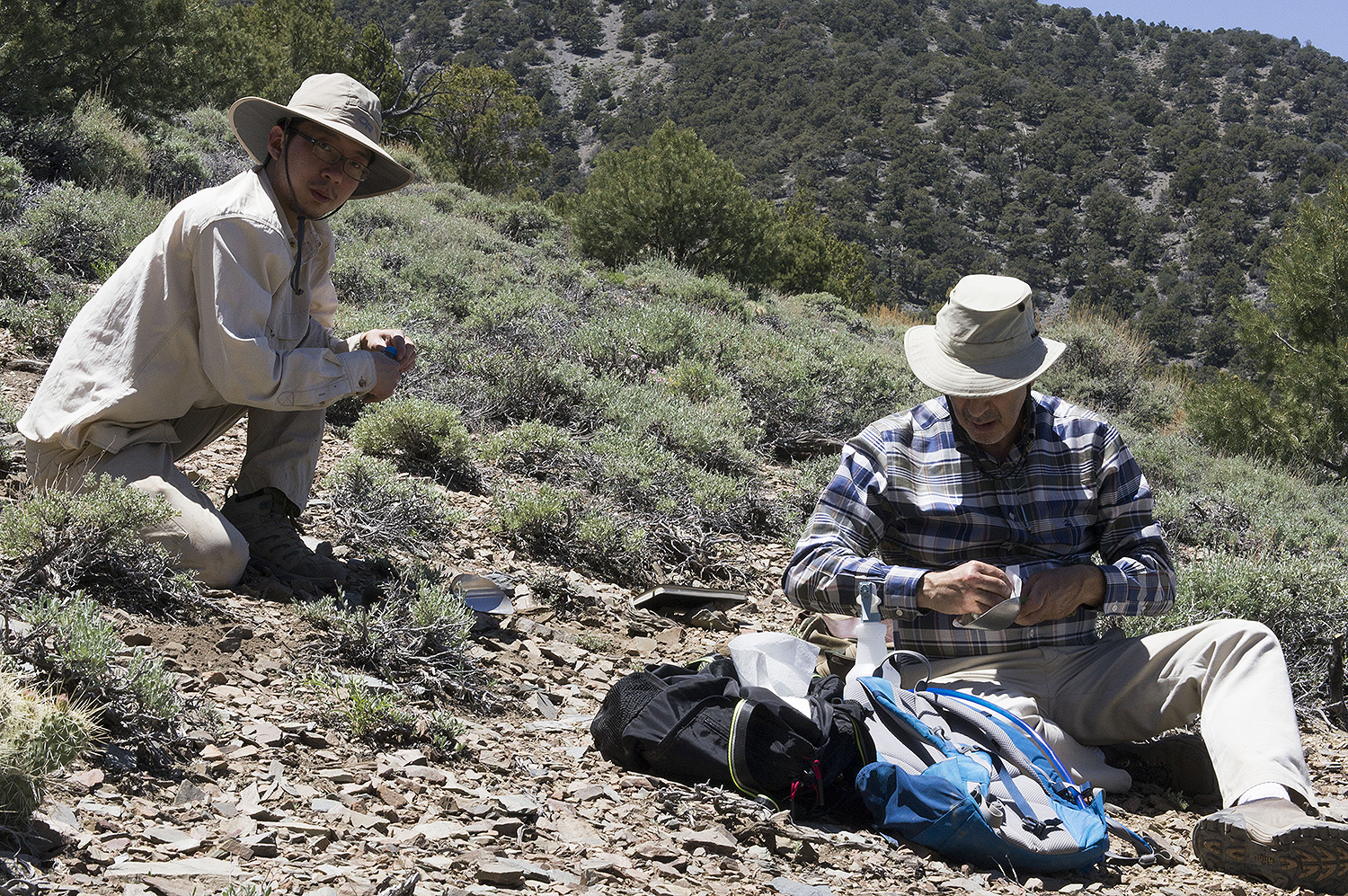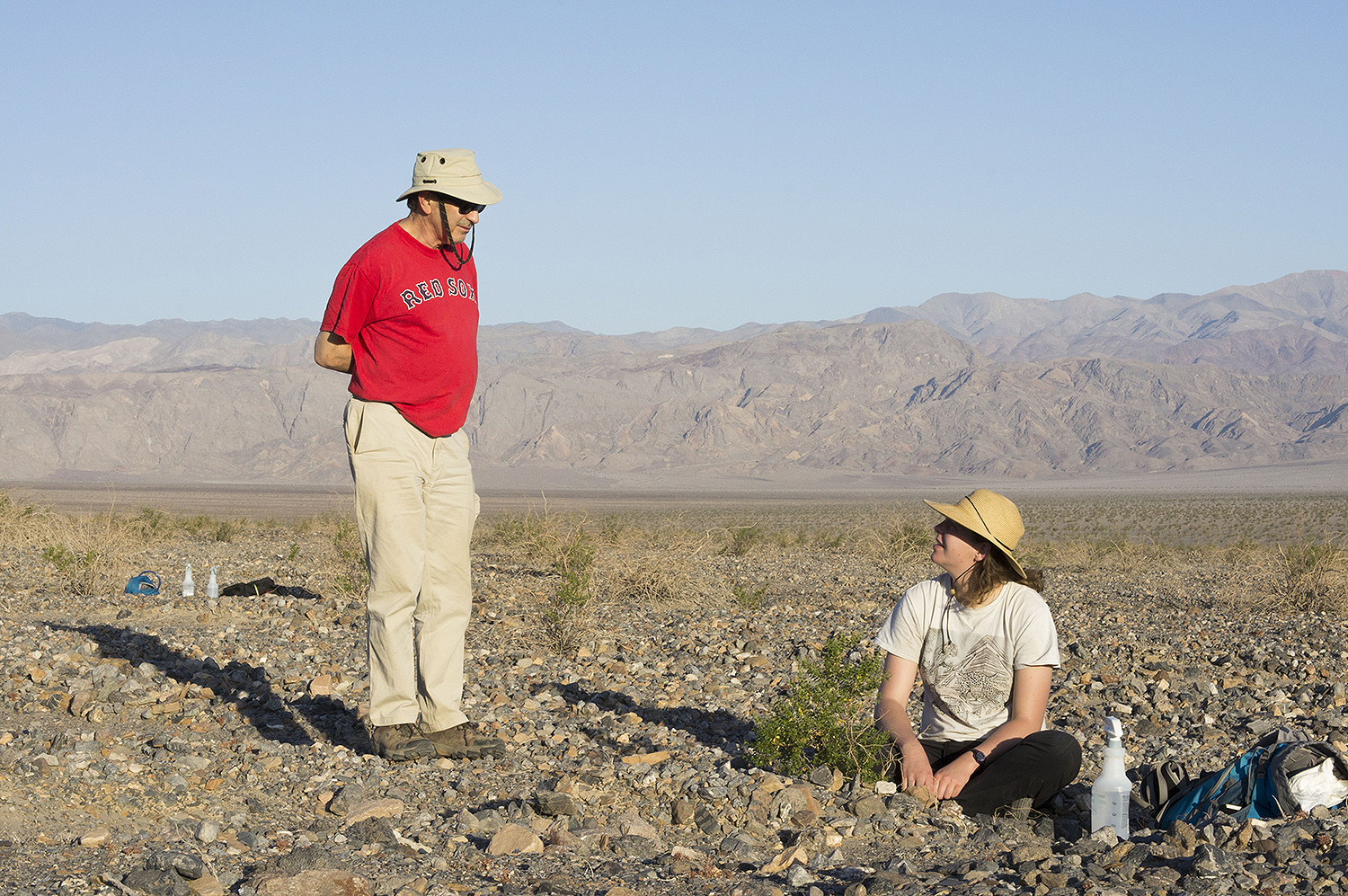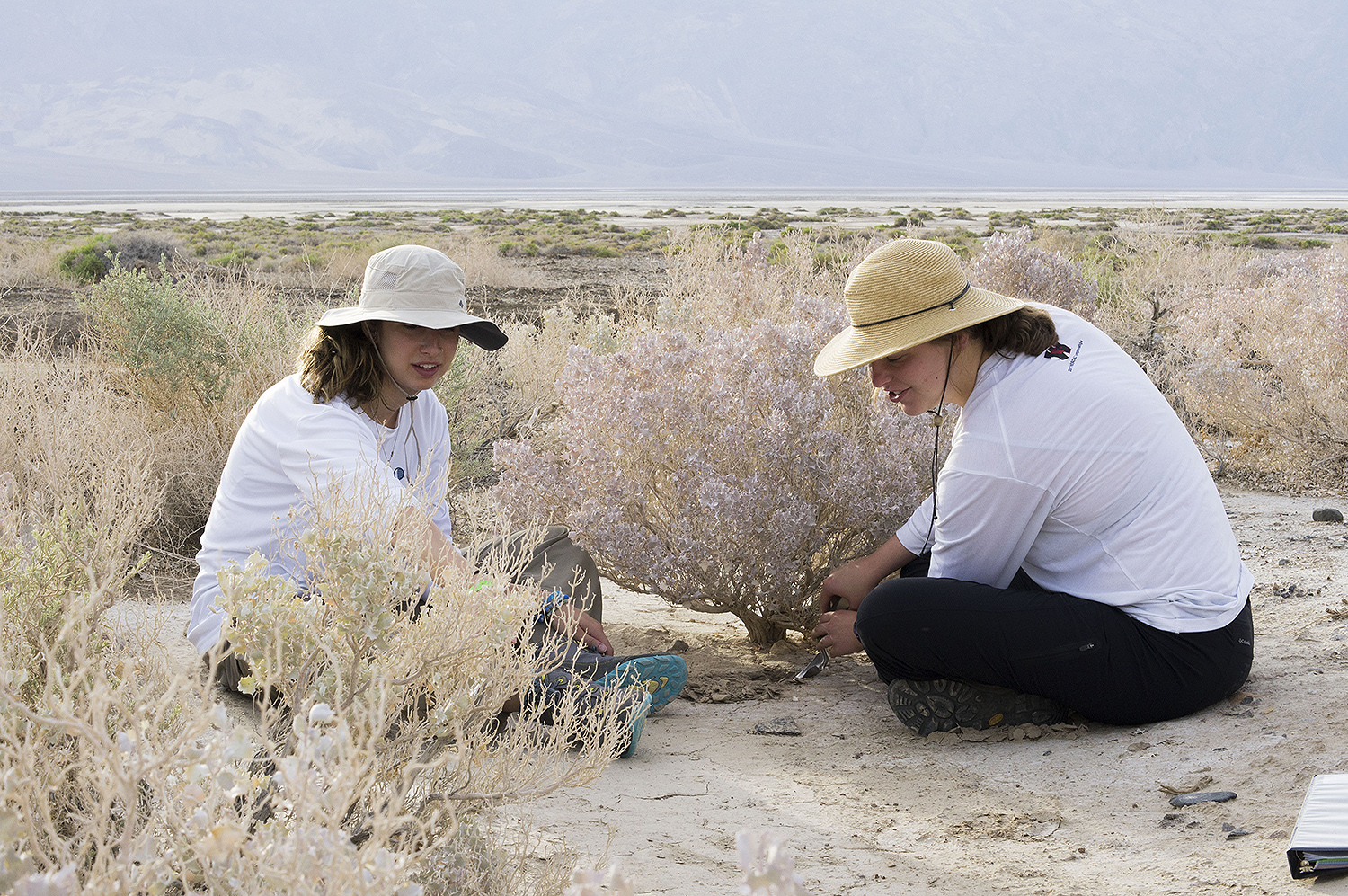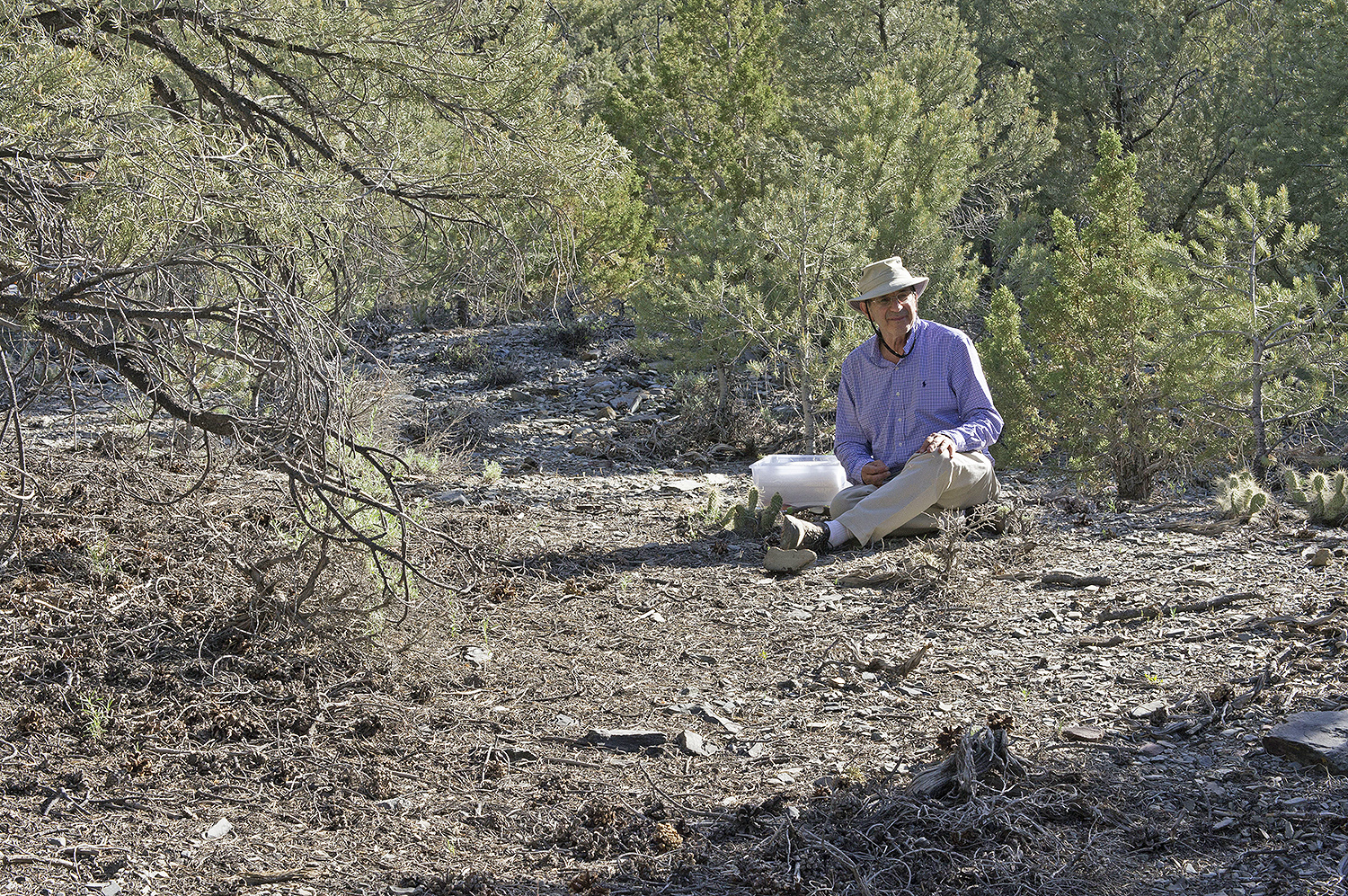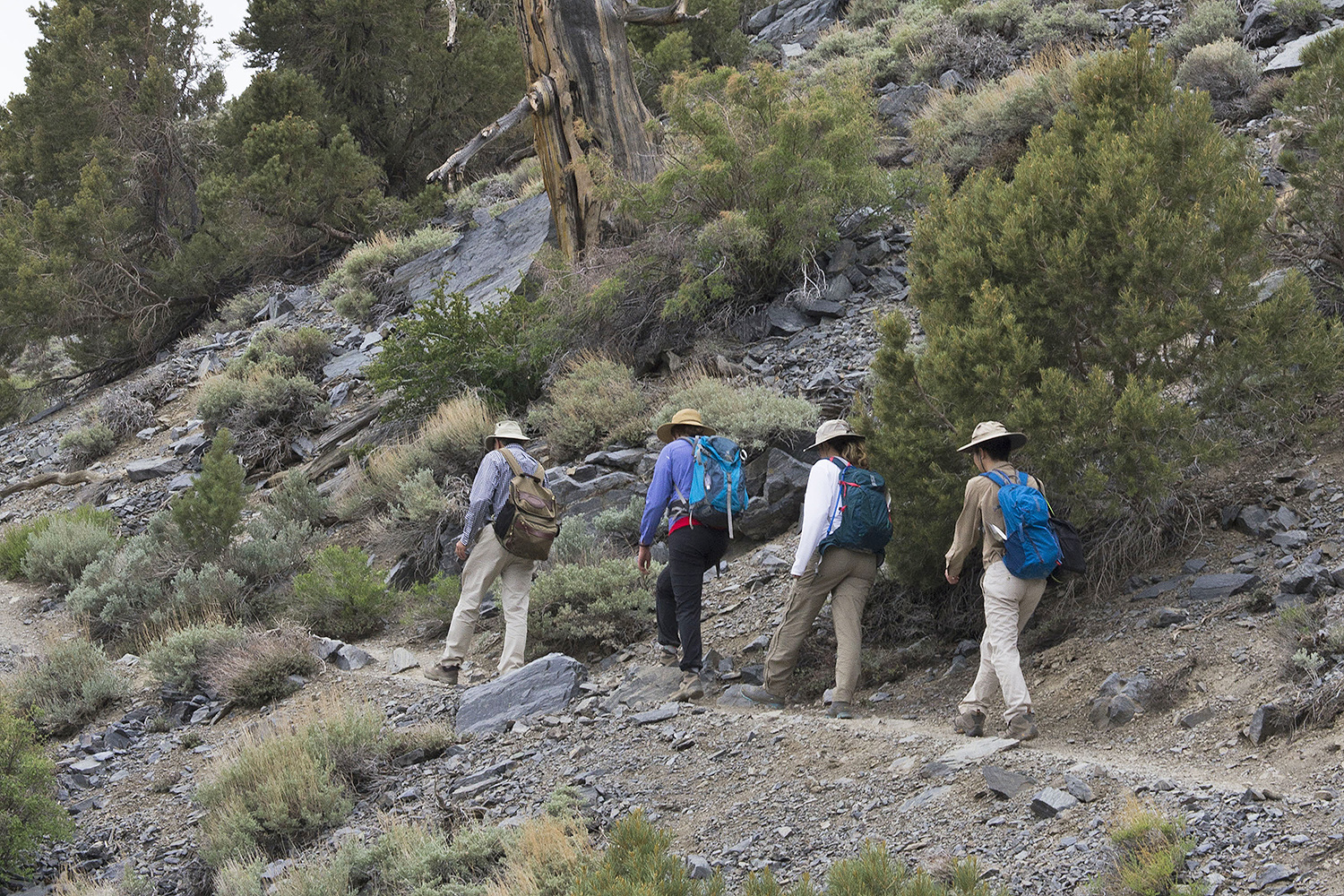Biology Team Samples Drought-Tolerant Bacteria in Death Valley
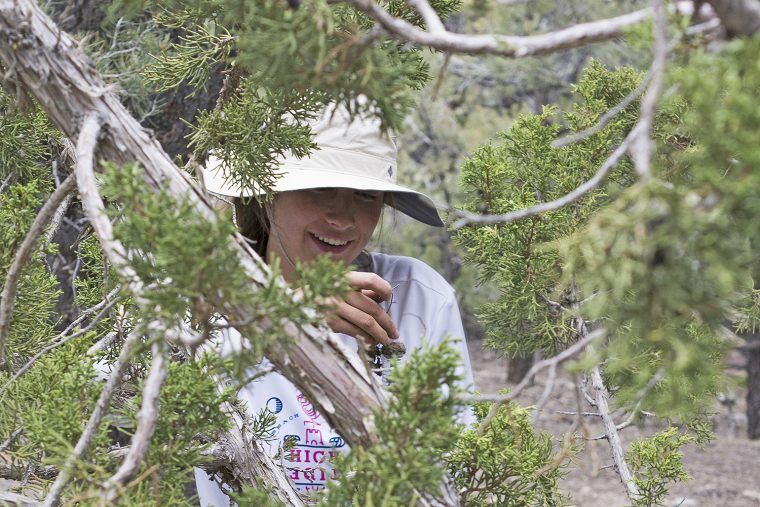

This spring, a research team from Wesleyan traveled to Death Valley National Park to explore the ways bacteria diversifies in extreme environments.
Death Valley, located about 130 miles west of Las Vegas, is a below-sea-level basin known for being the hottest place on earth and driest place in North America. The average rainfall is less than 2 inches, annually.
“National parks are ideal for research, in general, because the land is protected indefinitely from commercial development,” said team leader Fred Cohan, professor of biology, professor of environmental studies. “Death Valley is a nice model system for exobiology because of its extreme habitat.”
Cohan, along with graduate student Jerry Lee, Bella Wiener ’19 and Nicole DelGaudio ’18, traveled to California May 29 through June 4. During this time, the researchers trekked through miles of parched — and often prickly — landscapes seeking to sample root soil, or rhizosphere, from various plant species, each over a wide range of elevations that differ notably in their temperatures. The rhizospheres contain the rod-shaped bacteria Bacillus subtilis, which has the ability to tolerate harsh environmental conditions.
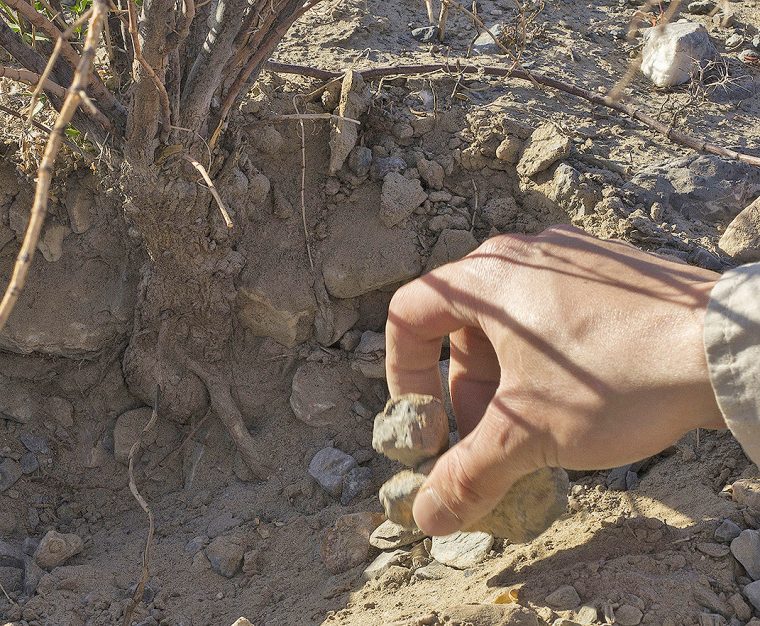
“At Death Valley, we’re looking at the extent to which newly divergent Bacillus species are diverging with respect to the plant species they infect and to the elevations they are adapted to,” Cohan said. “Also, we’re investigating the nature of bacterial species, that is, the extent to which bacterial species hold the properties that have long been ascribed to animal species, such as cohesion, ecological distinctness, and irreversible separateness.”
Over the week, the team sampled root soil from prickly pears (3,000 to 9,600 feet), juniper trees (5,800 to 8,000 feet) and sagebrush (5,800 to 9,600 feet.) Wiener and DelGaudio also went on a seven mile hike, twice, to collect samples from just under 10,000 feet in elevation. The temperature at Death Valley decreases about 4 degrees Fahrenheit per 1,000 feet of elevation.
“The one-of-a-kind landscape was fascinating,” Wiener said. “The sunsets, golden hills, salt flats and scenic hikes definitely made digging for soil samples every day for 11 hours more enjoyable. At the beginning of the trip planning I was a bit nervous about the extreme heat, but each day we escaped the 110 degree weather to hike and sample at higher elevations.”
With the root soil samples in tow, the researchers returned to Cohan’s Lab in Shanklin to begin isolating the Bacillus bacteria as individual strains from the soil samples. This process involves heating the sample, killing off non-spores, testing isolates for having metabolic attributes of Bacillus subtilis, and demarcating ecologically distinct populations. Once the Bacillus strains are separated and collected, the researchers test to see if the bacteria diversified to specialize in different habitats. In addition, the group conducts genomics studies to try to find the genetic basis of adaptations to different plant species and to different elevations.
The researchers also study the origins of bacterial species with regard to diversification in adaptations to toxic elements (copper, boron, lead, etc.) “We might be studying the issues of speciation on other planets. Is Death Valley really like other planets? Hard to say, we’ll know when we get there.”
Additional photos of the research trip are below: (Photos by Will Cohan)
